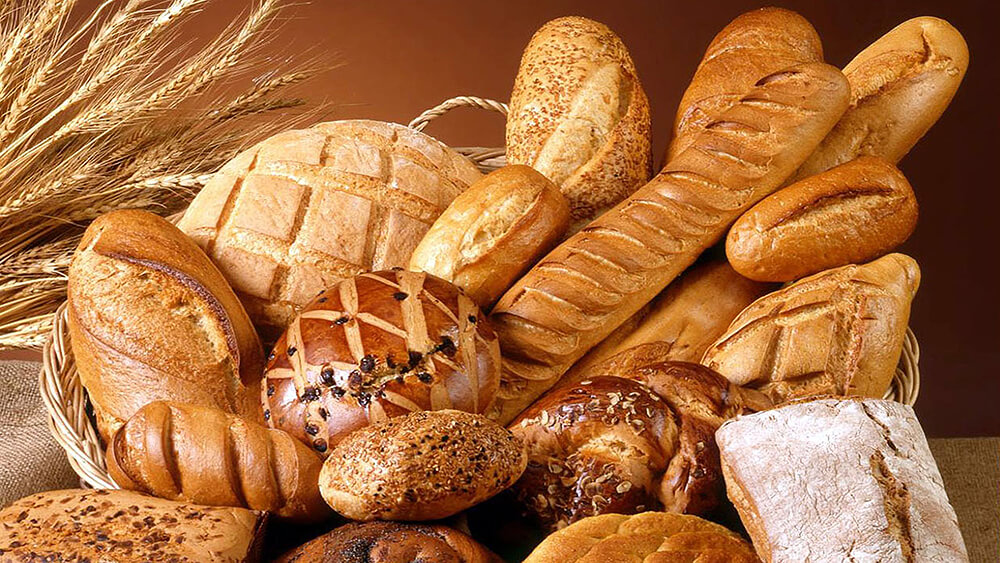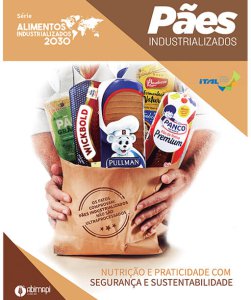MYTHS AND FACTS RELATED TO INDUSTRIALIZED LOAVES OF BREAD/SLICED BREAD
The analysis of the samples of 70 loaves of bread reveals the facts that bring down myths related to industrialized products. Despite the wide diversity of industrialized bread, loaf of bread represents the type of product most consumed by the population and is well representative of the range of items marketed in Brazil. Specifically, the values found are valid to bring down many myths about industrialized products.
MYTH: THEY ARE POOR IN NUTRIENTS
FACT: THEY ARE NUTRITIVE, CONTAIN CHARACTERISTIC NUTRIENTS OF BREAD
- Characteristic nutritional composition of a bread made with FLOUR, WATER, SALT AND
- They can contain FIBERS and PROTEINS up to the upper quantities as the white French bread or whole homemade bread
- There are loaves of bread with Omega 3, inulin, vitamins, etc. added, as secondary ingredients
MYTH: THEY HAVE HIGH QUANTITIES OF FAT, SUGAR, AND CALORIES PER GRAM
FACT: THEY CONTAIN QUANTITIES OF FAT AND CALORIES PER GRAM SIMILAR TO AND EVEN LOWER THAN WHITE FRENCH BREAD OR WHOLE HOMEMADE BREAD
- The quantities of SATURATED FAT can be even lower than the non-industrialized bread
- The whole loaves of bread present a higher content of SATURATED FAT, but it is not a rule of thumb, as there are many products WITHOUT saturated fat
- The average quantity of CALORIES per gram of white loaves of bread is lower than the white French bread. The whole loaves of bread, relatively to the white loaf of bread, have more CALORIES due to their composition, but there are many products with quantities of CALORIES lower than the whole homemade bread
- There are diet/light versions with reduced calories and fats
MYTH: THEY HAVE HIGH QUANTITIES OF SODIUM
FACT: IN AVERAGE, THEY CONTAIN QUANTITIES OF SODIUM LOWER THAN THE NON-INDUSTRIALIZED BREAD
- Bread preparation uses salt as an important agent in leavening and generation of the bread characteristic flavor
- The quantity of salt varies a lot among the brands and different types of bread, whether made at factories, bakeries or in homes
- In average, ALL the industrialized white loaves of bread have a lower quantity of SODIUM than the white French bread
- In average, ALL the industrialized whole loaves of bread have a lower quantity of SODIUM than the whole homemade bread
MYTH: THERE IS LITTLE PRESENCE OF IN NATURA FOOD
FACT: FLOUR, WATER, SALT AND YEAST ARE THEIR MAIN INGREDIENTS, THE SAME RAW MATERIALS USED IN BAKERIES OR IN HOMEMADE BREAD
- Basically, industrialized bread are made with flour, water, salt and yeast. In terms of quantity, the greater proportion in formulation are the same ingredients used in bakeries and homes to make bread
- Industrialized bread are not made from substances originated from food or synthesized from other organic sources
- Industrialized bread is not an imitation of other types of bread. The authenticity and good quality are required in order to obtain success in the consumer market
- Industrialized bread is not inventions of the moder science and food technology applied to the industries. C&T de alimentos has evolved significantly in the last few decades and contributed to improve the products quality and safety
MYTH: FALSE BECAUSE THEY ARE PRESENT IN FOOD INGREDIENTS OF INDUSTRIAL USE
FACT: THE EVENTUAL USE OF INDUSTRIAL FOOD CAN OCCUR (GLUTEN, WHEY, MODIFIED STARCH, ETC.), BUT IT IS NOT A RULE OF THUMB IN THE SECTOR, AND ALL OF THEM ARE APPROVED BY ANVISA (MINISTRY OF HEALTH) AS SAFE FOR CONSUMPTION
- Some companies use a large quantity of ingredients, however, other don’t
- In an industrial scale, it can be inevitable to use food raw materials in its original state, being its processing necessary. However, the processes used in the ingredients processing or extraction are developed and used in compliance with the technical and safety standards
- Oil hydrogenation is an example of raw materials processing for its adequacy to the industrial processing. Its application can cause the increase in the saturated fats content, but it does not mean that it makes the product improper for consumption, considering that the final content is within the dietetic recommendations for saturated fat intake
- Several loaves of bread do not use plant-based fat, but common oil. The industrialized bread analyzed use: soybean oil (46 products), corn oil (2 products), canola oil (5 products), linseed oil (1 product), butter (4 products), margarine (1 product), plant-based fat (9 products)
- The ingredients of industrial use used in the bread of the analyzed sample are: modified starch, enzymes, fructose, maze glucose, gluten, inulin, powdered whey and sucralose. All of them have technological purposes and are provided in the legislation that authorizes its safe use
MYTH: THEY ARE BAD BECAUSE THEY HAVE A HIGH NUMBER OF INGREDIENTS
FACT: THE NUMBER OF INGREDIENTS VARIES ACCORDING TO THE MANUFACTURER, BUT IT IS NOT AN INDICATION OF QUALITY, HEALTH, OR SAFETY
- Some companies use a large quantity of ingredients, however, other don’t
- Using a high number of ingredients has no relation with the LOWER quality or safety of a food product. There is no scientific evidence to state that a product with 4 ingredients has a better quality and is safer than another with 5 or more ingredients
MYTH: THEY USE ADDITIVES CAPABLE TO MAKE THE PRODUCT EXTREMELY ATTRACTIVE (ADDITIVE)
FACT: ANY COMPANY LOOKS FOR WAYS TO MAKE THEIR PRODUCT ATTRACTIVE, BUT THERE NO ADDITIVES CAPABLE OF ADDICTING THE CONSUMER
- Some companies use many ADDITIVES, however, other don’t
- Additives are used in very low quantities in relation to the main ingredients, which are flours, oil, sugar and salt, among other naturally used to make bread, both in the industry, or bakeries or homemade
- The main ADDITIVES of industrial use used in bread in the analyzed samples are: preservatives, emulsifiers, thickeners/stabilizers, dough enhancers and acidulants
- It is natural for a company to make their bread more attractive to the consumer, as it is natural that it occurs at bakeries, in artisanal products and even homemade bread, to please family and friends. Though, there is still no news of the existence of a bread with “hyper-flavor”, “hyper-palatable” and “and almost addicting”
- All ADDITIVES used in industrialized bread manufacturing are included in the specific legislation that authorizes its safe use
MYTH: THEY ARE FREQUENTLY ADDED WITH AIR OR WATER
FACT: TO MAKE BREAD, IT IS NATURAL TO USE WATER AND INCORPORATE AIR TO THE DOUGH
- Indeed, industrialized bread need water and yeast added to release gases, which makes the dough “full-bodied”, as all and every bread made in bakeries and homes
- Therefore, incorporating air and water is the base for making a bread dough
MYTH: THEY ARE BAD BECAUSE THEY HAVE UNFAMILIAR INGREDIENTS NAMES
FACT: IN FACT, SOME INGREDIENTS ARE A LITTLE FAMILIAR, BUT EACH OF THEM HAS ITS PURPOSE. THIS IS ALSO NOT AN INDICATOR OF QUALITY, HEALTH, OR SAFETY
- Mainly, additives use technical nomenclature, which is not familiar to many people. But the name has nothing to do with quality, safety, or health of an ingredient
MYTH: THEY USE HARMFUL MANUFACTURING PROCESSES
FACT: THE MANUFACTURING PROCESSES ARE SAFE. THE INDUSTRIES OF THE SECTOR USE QUALITY ANS SAFETY SYSTEMS IN THE ENTIRE PRODUCTION PROCESS
- Most of the processing stages and techniques do not imply in the product loss of quality or its inadequacy for consumption
- The bread processing techniques use molding, as it is made at bakeries and homes
- The industrialized bread has not been created to replace bread from bakeries or homemade, but they meet the customers demand for convenience and practicality




